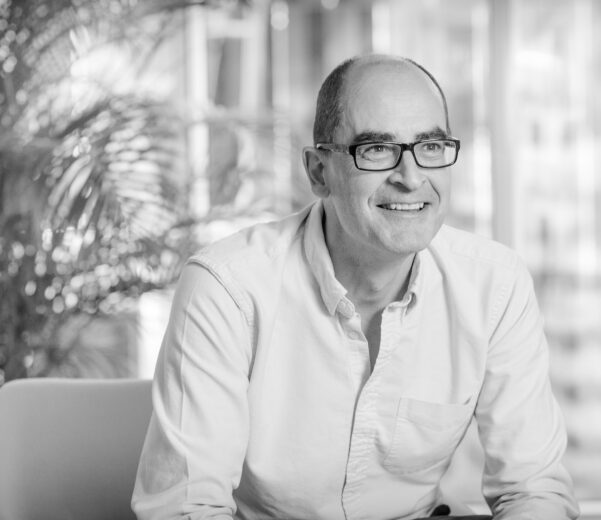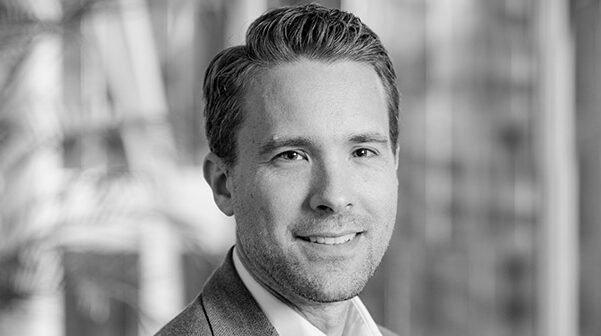Debbie Morrison is Managing Director, Global Partnerships and Events, at Ebiquity
Last week, I got to look at the real and pressing issues facing marketers with a fresh perspective for the first time in nearly three decades. For each of the last 29 years, I’ve attended the ISBA Conference as an organiser and creator of content. This year I was a delegate for the first time, keen to understand through fresh eyes the challenges for my new clients and opportunities for my new Ebiquity colleagues.
For me, there were three dominant themes at ISBA’s annual conference, all of them driven and shaped by the ever-more digital marketing ecosystem. In my blog for The Drum last month I talked about the constant change that is marketing’s new normal, even if the rate of change – incredibly – is actually accelerating. Delegates at ISBA 2019 focused on trust, disruption, and performance.
Restoring trust
In his swansong months as CMO of Unilever and stepping confidently into his new role as President of the Advertising Association, stage favourite Keith Weed said that if marketers don’t now tackle the issues of trust that have mired the industry for so long, it may be too late. Consumer trust in advertising is at an historic low and falling, which Weed puts down to seven deadly sins: reduced quality of advertising, the fakery of inauthentic influencer marketing, the abusive exploitation of personal data, ad fraud, fake news, irritating personalisation, and ad bombardment. “Advertising without trust is noise,” he said. “Brands without trust are just products.”
But Weed wasn’t filled with despair or defeatism. He believes we have the right conditions for whole system change, and mapped out a five-point plan for restoring public trust in advertising, launching a new (albeit table stakes) white paper from the AA, ISBA, and the IPA. The best way to restore trust is to produce great advertising; creative that’s brilliant, focused, human, purpose-driven, and brave. To progress we now need brands and broader industry to commit to actioning the plan.
Commander Clarke Jarrett, head of counter-terrorism command at New Scotland Yard, made the link between advertising and ad misplacement on extremist and terrorist sites more real than many in the audience had ever seen or realised. His talk was both humble – “it’s slightly intimidating to be in a room full of creatives armed only with a Met Police PowerPoint” – but also humbling. The grim realities of advertisers allowing their automated advertising to fund such sites was made graphically and alarmingly clear. While this is a trust issue, it’s also very much more important than that. And although advertisers and online platforms have taken important steps to remove and stop funding much of this content, more needs to be done, particularly with newer, smaller platforms.
In a panel session on building sustainable agency/media relationships, Sky’s marketing procurement supremo, Jane Dormer, argued that the best way for trust to be re-established – particularly between advertisers and their agencies – was for both parties to work together in partnership. This sentiment was echoed by Jenny Biggam, co-founder of media agency The 7 Stars, who said: “Open and transparent relationships are the only way forward.”
Riding out disruption
Boots’ chairman and ISBA president Elizabeth Fagan opened the conference by highlighting the unprecedented – and increasing – pace of change in marketing. She urged advertisers to take responsibility and control of the ever-evolving media landscape with boldness and confidence, and in this way regain the trust of customers and consumers.
Then, in a gentle interview with ISBA’s Phil Smith, WPP CEO Mark Read compared the disruption and radical surgery required in his own business with the “incredible disruption” his company’s clients face every day. One of the leading drivers of this, he suggested, was companies trying to catch up with and adopt the use of technologies and platforms their customers are highly proficient at using.
The Guardian’s CEO David Pemsel told an inspiring story of how the media group had gone from an £87m loss in 2015 – and year-on-year losses that were threatening the very existence of the 200-year-old organisation – to breaking even this year. And all this without introducing a paywall. Having been disrupted by digital, the Guardian completely re-engineered its business, made smart use of data to track and involve readers, and encouraged a sustainable model of voluntary contributions.
What’s all the more remarkable about the Guardian Media Group’s ability to ride out the disruption is that break-even has happened in the very year that the modern face of digital-first journalism – BuzzFeed, Huffington Post, and VICE – have already laid off 2,500 staff.
Old vs new media disruption was writ large in a future-gazing panel session titled “Media 2024”. With P&G’s Gerry D’Angelo playing the role of referee, in the red corner were David Dinsmore of News UK and Tess Alps of Thinkbox, and in the blue corner Facebook VP Steve Hatch and the impressive Nishma Robb of Google.
While there was far from universal consensus on what the world in 2024 might look like, Nishma struck the most optimistic and pragmatic tone. Five years from now, she predicted, the industry will be much more mature in its use of tech, data, and meaningful measurement in advertising. “With new tools and new rules, we will be able to turn back to making great ads driven by creativity,” she said, echoing Keith Weed’s opening keynote rallying cry.
A panel on diversity and inclusion reported on impressive work being done by ISBA and members on building communities within businesses that ensure that all communities are adequately represented in their companies. All panel members – from media, financial services, and FMCG – said it was challenging to address unconscious bias, that it’s OK to admit to mistakes, and that setting targets on issues including the gender pay gap is the right thing to do. A recurrent – and appropriately disruptive – theme was the lack of diversity in the marketing industry. Googler Nishma Robb said she very rarely sees or meets “people like me” in marketing, and this must change.
Driving improved performance
Earlier this year, ISBA and Ebiquity’s Analytics practice published a white paper putting attribution in its proper place as one of the tools of marketing effectiveness, if done right. Ebiquity’s head of UK effectiveness, Nick Pugh, led a panel on marketing effectiveness picking up on the themes of the white paper. And despite the fact that it has never been more challenging to understand the impact of the different levers of marketing, it’s also never been more possible; a delicious paradox. Nick argued that the science of marketing effectiveness can help to restore trust in marketing – particularly digital – by making sense of the disrupted lives all brand custodians lead today.
Building a marketing effectiveness culture requires: buy-in from the top-down; a preparedness to break down siloes, join up data sets, and collaborate across functions; long-term planning that allows marketing tactics to have enough time to demonstrate effectiveness; and, an alignment and agreement of the right tools, data, and methodologies. No one tool or solution can be a panacea, Nick argued. Brands need a toolkit that can tell a consistent and coherent story about what’s working and why (and what isn’t and why not).
Greengrass Consulting’s Libby Child – who’s interviewed hundreds of business and marketing leaders to understand how to improve performance – said that it is a CEO and CFO issue, not just the CMO’s concern. Direct Line Group’s marketing director, Mark Evans, characterised the marketing community as being split between “thrivers and just-survivers”. While many have been side-swiped by trust and disruption, in many businesses, marketing effectiveness culture is alive and well. While he is confident that DLG’s own culture is driving growth and profit and acts as a Trojan horse for making businesses more customer-led, the company is not complacent. As marketing changes, so the tools of measuring its impact need to evolve with it. Success demands curiosity and a combination of patience (to let the capability grow) and impatience (to get there as fast as possible).
External perspective
The conference ended with two very different perspectives from outside the industry. One-time speechwriter for Tony Blair and columnist for The Times Philip Collins drew sharp intakes of breath by describing Steve Jobs as “a man of no lasting consequence” and “just a phone designer”. He warned brands not to claim too much virtue in their brand campaigns without considering the full implications of their messaging, citing the backwash on tax faced by HSBC following its recent “One Island” campaign. He also warned against the cult of authenticity, citing @POTUS45 as the most authentic politician on the planet.
The closing keynote was from Matthew Taylor, CEO of the Royal Society of Arts. Most people feel ambivalent about advertising – believing it affects others and not them. But in turbulent, disruptive times of social populism and pessimism, Taylor suggested that many citizens might welcome curbs on brands’ freedom to market if their personal data continues to be bought and sold at will. He also suggested that one view of advertising is that it is “the acceptable face of fake news”.
Brain food
By drawing together brands, agencies, publishers, and platforms for a once-a-year big pow-wow, the ISBA conference addresses issues that matter in marketing. But it also attracts challenging external voices – from the Met to the RSA – who put familiar issues in a new light. I left the event with new perspective, a bit more trusting, and a bit less disrupted. Whether I’ll be a whole lot more effective by 2024 remains to be seen.



